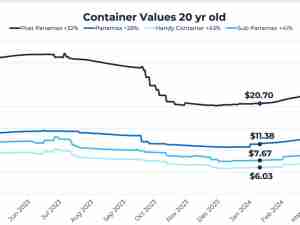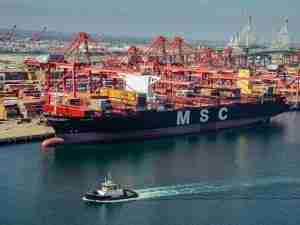But deliveries of new bulkers ordered before the global economic crisis of 2008 are weighing on the freight market even as a record large U.S. soybean crop and the third largest corn crop come off the fields and head to destinations across the world. This has been compounded by pre-booked grain cargoes.
"Although the volumes are starting appear from the U.S., there is a surfeit of tonnage and some of the grains that are appearing will already have been covered on short period deals," said Derek Langston, a director with SSY Consultancy.
"There has not been much resistance so far from owners to gradually falling charter rates."
Weaker freight activity on the smaller shipping markets including supramaxes has also weighed on sentiment.
"Grains can give the (ocean freight) rates a pop, but there has to be a strong underlying base as well. If all you're doing is picking up excess capacity, you're not going to see much of a surge in rates," a U.S. grain export trader said.
Russia imposed a ban on grain exports from Aug. 15 to Dec. 31 to curb rising prices due to its worst heatwave on record. Officials have since said the ban would likely remain in place until the 2011 harvest has been collected. Ukraine has said it will limit grain exports this year.
Shippers saw it as a potential boon for freight earnings as traditional buyers from key Middle East markets would need to source some of their grains from the United States, meaning longer distances to transport the cargoes by sea.
Freight rates for panamaxes, which are especially used to ferry soybeans, rallied in August and September in expectation of stronger business.
Average daily earnings reached a two-month high of $27,329 in early September. They rose by a modest $61 to $17,545 a day on Thursday, the first move higher since Oct. 11, Baltic Exchange data showed.
Analysts said grain houses and other operators had already booked vessels in August for October loading on period business.
"The problem is there are too many ships chasing the same cargo," said Gaurav Kumar with consultants MSI.
"Vessels available for hire in the Atlantic are high at the moment putting a cap on what could be achieved in terms of freight rates. This meant that we haven't seen support to the level we expected," he said.
Soybean exports from the United States, the world's top supplier of the oilseed, were expected to reach a record 41.37 million tonnes in the year ended Aug. 2011, with the majority shipped in the first six months after the fall harvest.
U.S. corn exports were pegged at 50.8 million tonnes, up 1 percent from a year ago. More than 4.5 million tonnes of soybeans have been shipped since September, about 2 million tonnes more than the same time last year, but the corn shipment pace is slightly behind a year ago.
Deliveries Rising
Jeffrey Landsberg, managing director of dry bulk consultancy Commodore Research, said port congestion for panamaxes, which are also used to transport coal, had fallen significantly over the past two and half months at coal ports in Australia and Indonesia, weighing on rates with more ships available.
"This has been further compounded the steady supply of newbuildings continuing to enter the market," he said.
SSY said 128 panamaxes have already entered the fleet so far this year compared with 86 for the whole of 2009. A further two ships had been converted from tankers into panamaxes this year compared with 8 conversions for the whole of 2009, it added.
Nevertheless, analysts said U.S. grains exports and Chinese coal demand could still bolster panamaxes this year.
"Rates could eventually find more support if heavy rain ends up










